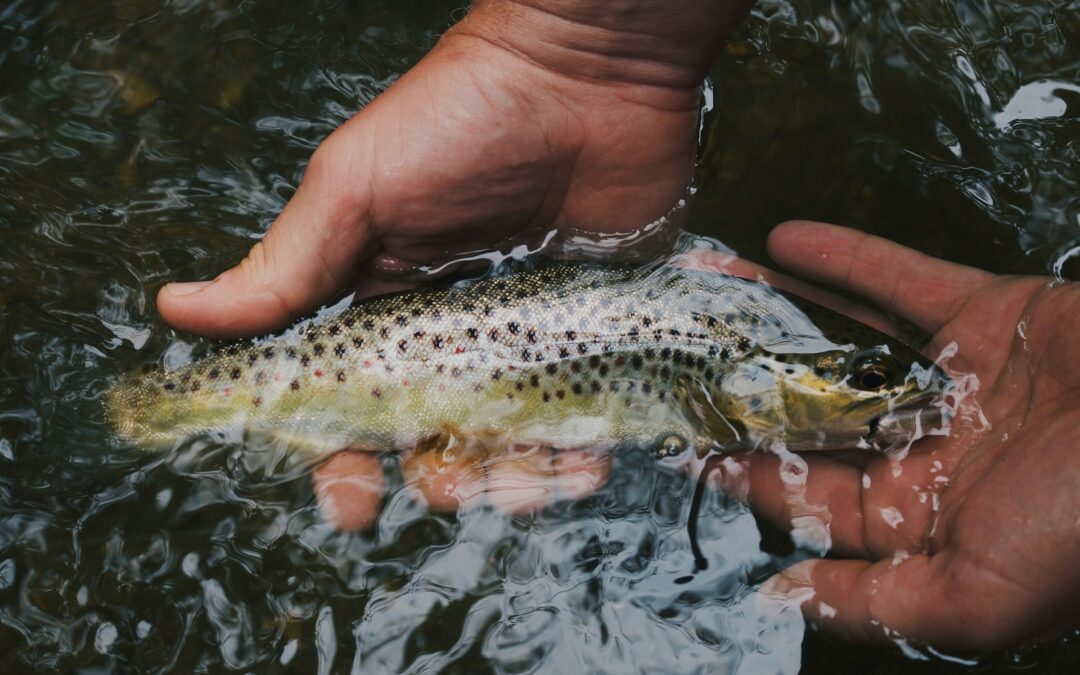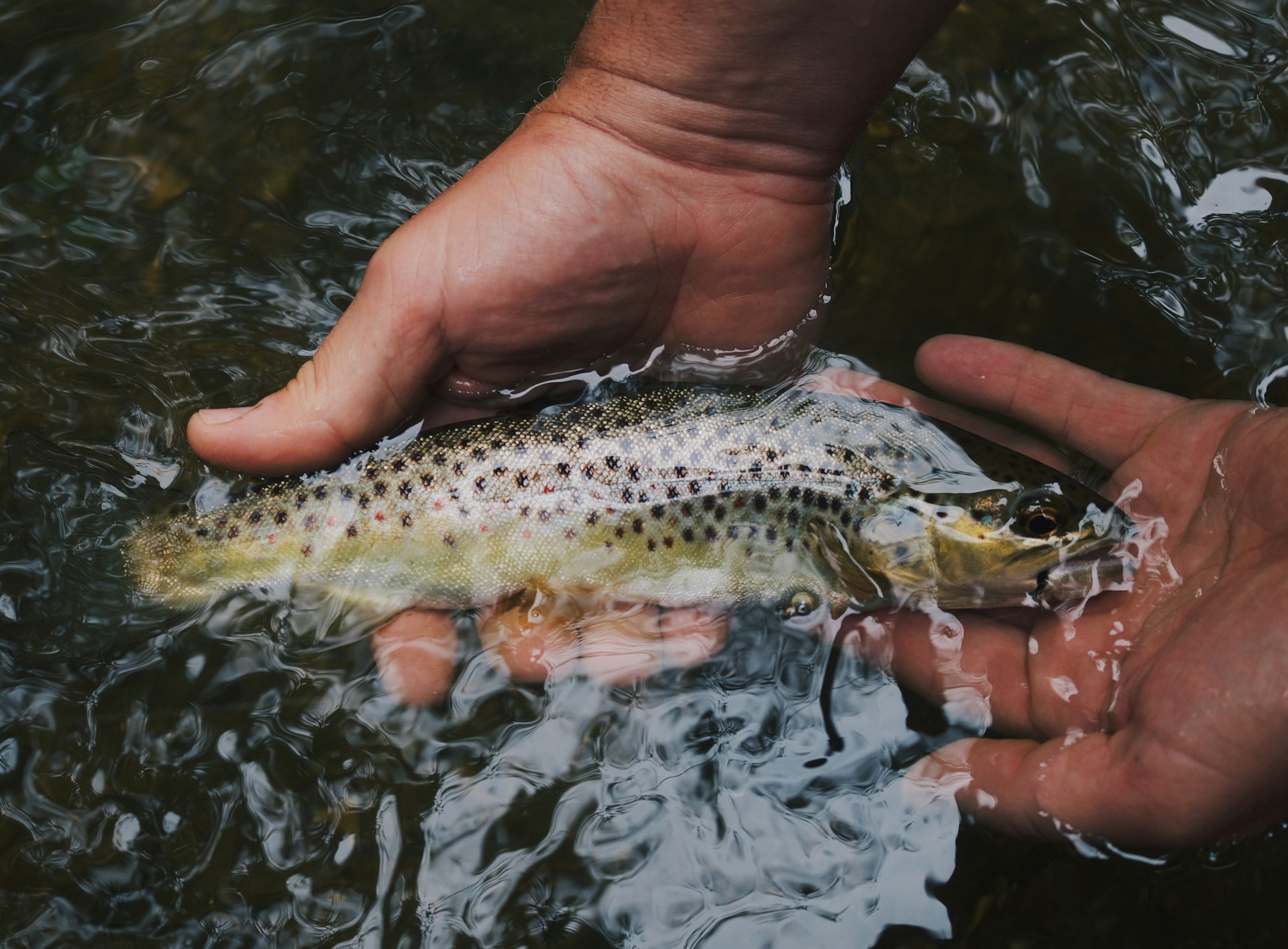A patient reports on an odd sight in our rivers…
For one curious SES patient and keen fisherman, the colour of local trout provided the inspiration for a deep dive into the eye health of fish.
Mention ‘fisheye lens’ and most people will probably start thinking about filming in strange perspectives. However, for Leonid Itskovich a fisheye lens was potentially the reason for a peculiar sight he had encountered while fishing. We loved his report so much we asked his permission to share it.
—————————————————–
Recently I observed several trout in my favourite river that were unusually passive and had a very dark, almost black, skin colour.
Usually, trout change colour at spawning and, as this was not the right time of year, I
suspected the fish suffered from a disease. To find out what it could be, I spoke to a
couple of knowledgeable fishermen. They suggested these trout may suffer from a well-
known eye condition – cataracts.
At home I found some answers online. To my surprise, there are hundreds of scientific
articles and reports about trout and cataract. Unlike humans, trout don’t just use their eyes for seeing objects. Their eyes also constantly assess the level of light and prevalent ambient colours – and this signal then goes to the brain, which adjusts their skin colour to make them ‘invisible’ in the water.
They need this invisibility both so predators cannot see them, and so prey cannot detect
the trout as they approach.
At an older age, which can be any time between 5 to 15 years, trout often develop cataracts. This doesn’t just affect their eyesight and ability to see prey. It also makes them more visible.
That’s because the lost sense of light level results in their brain thinking that it is dark – so their skin gets blackish as if it was night. The cataract results in trout losing their ability to hunt. So, they lose weight and become susceptible to disease and parasites. It appears that cataracts are the greatest factor in trout mortality.
Unlike in humans, cataracts for trout is a deadly disease.
Digging deeper on the subject I found more research into the possible causes of cataract
in trout. One study found that in one lake 35% of trout were found with cataracts, while in
another lake nearby only 8% of fish had this condition. The only difference between thetwo lakes was chemical composition of the water, with researchers concluding that a zinc
deficiency in the first lake was probably a factor.
It is interesting to note that other fish species do not necessarily suffer from cataracts. For
example, wild salmon don’t usually suffer from them as they don’t live till old age, normally dying after first spawning at 4 years old. Eels can live up to 100 years, but they are almost blind anyway and, instead of eyesight, instead use other senses such as smell and touch for feeding.
As Doctor Robinson has already fixed cataracts in my eyes, I can continue to enjoy trout fishing, and I won’t worry that environmental factors are contributing to further issues with my eyes. However, maybe the science associated with fish can assist in the development of preventive ophthalmology in the future?
—————————————————–
The wonders of our natural world never cease to amaze! Thank you, Leonid for such an interesting and inspiring report.

